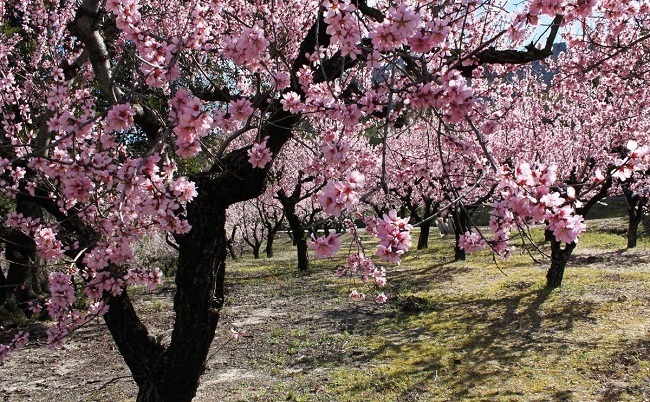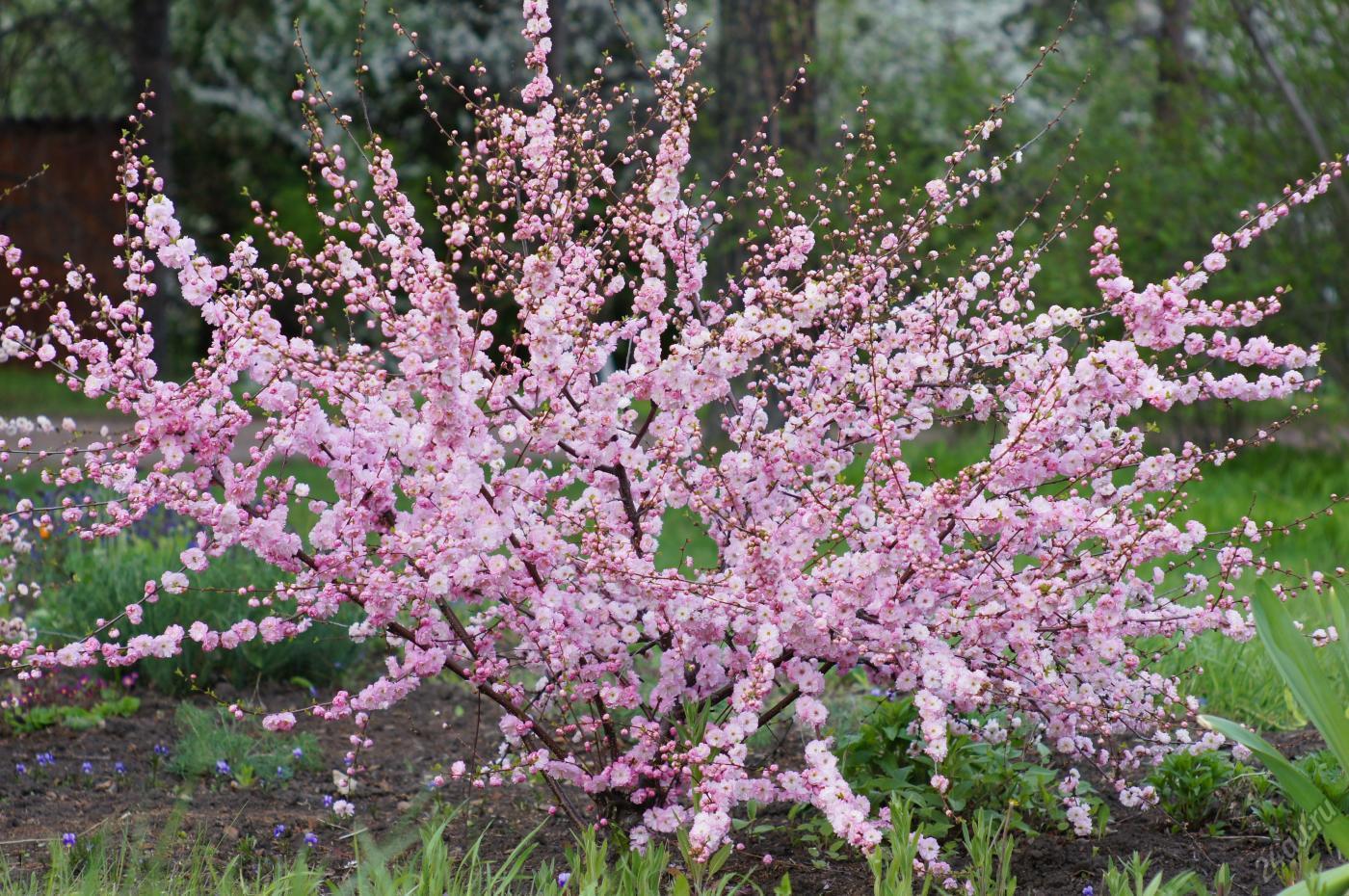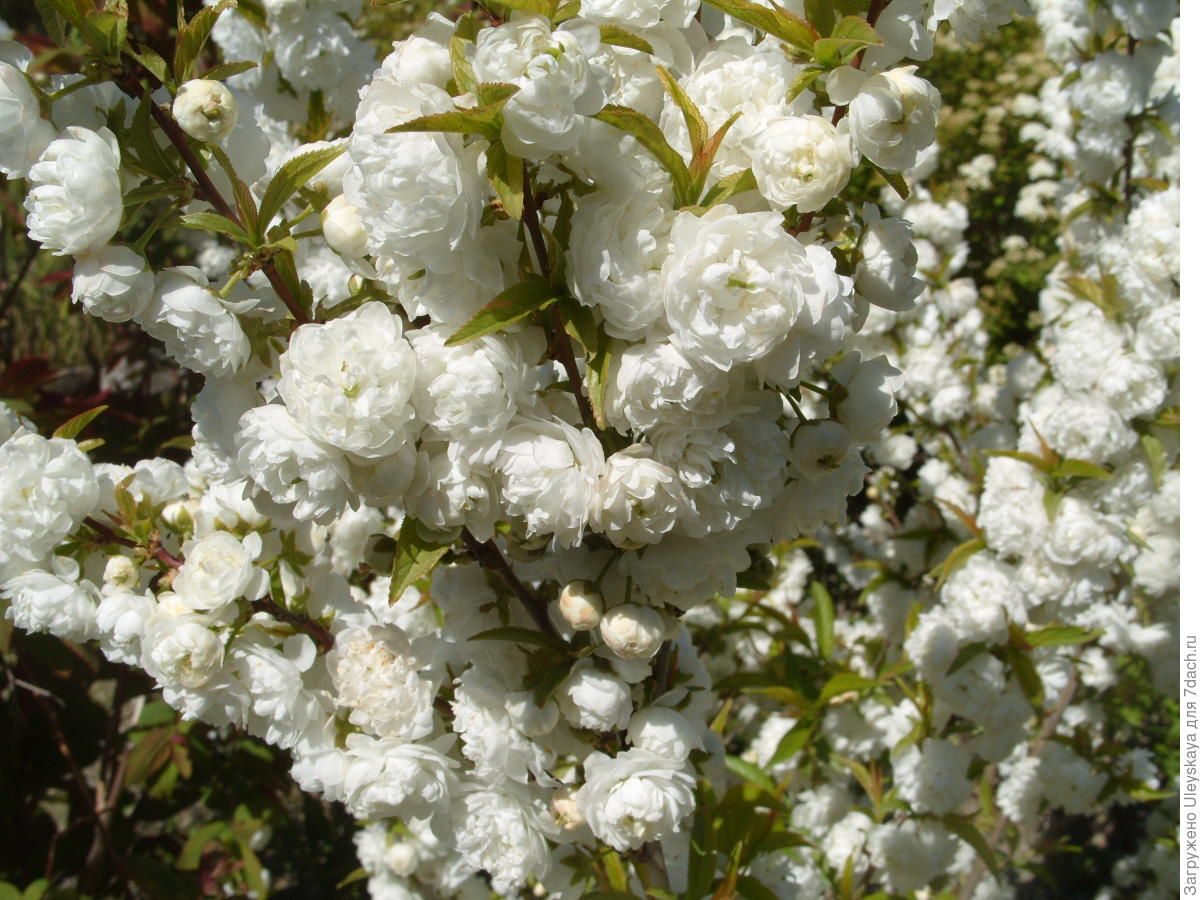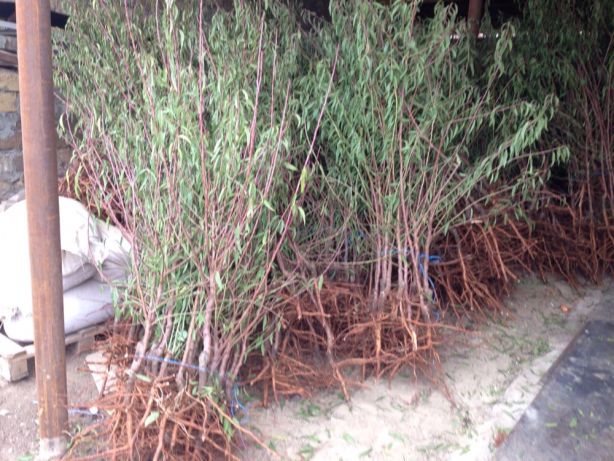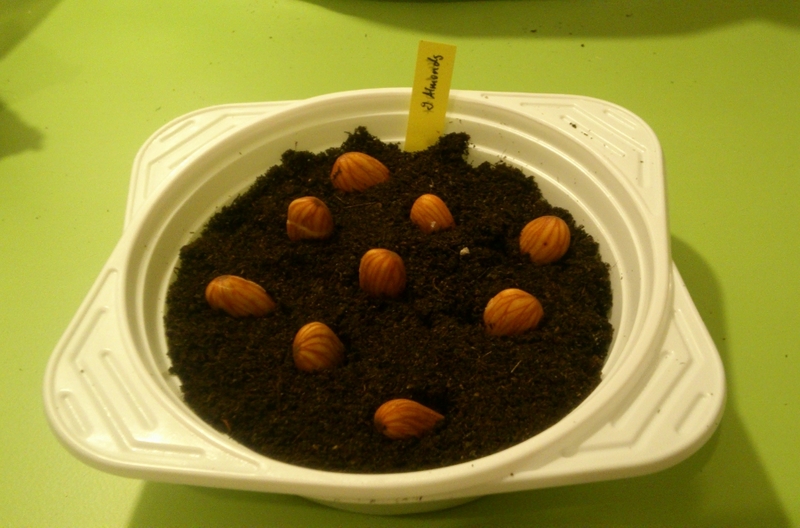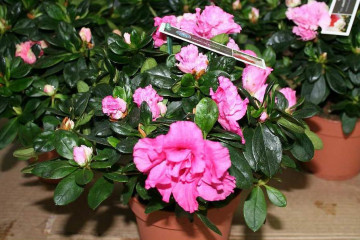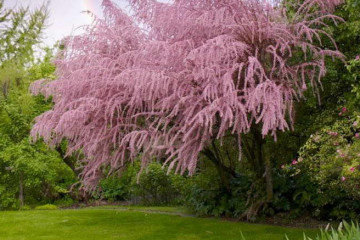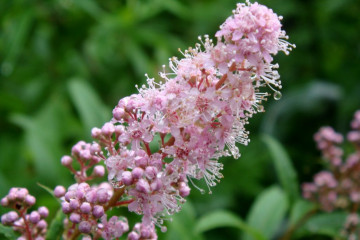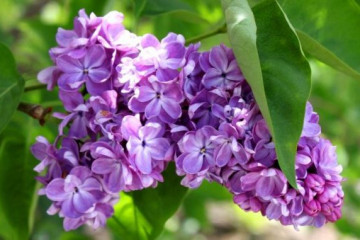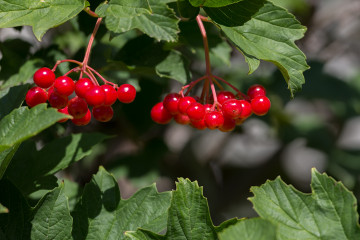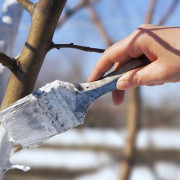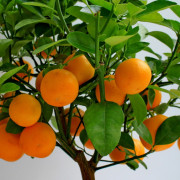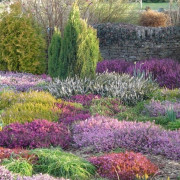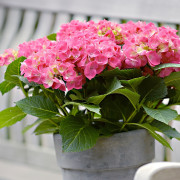Almond shrub - ornamental flowering plant
Content:
Any person knows almonds as a nut. But its decorative qualities are not inferior to food ones. By planting a bush of this plant on the site, you can improve its aesthetics.
Origin and appearance
As a subgenus of almonds, an ornamental shrub began to form in Asia even before our era. The first mention of this plant is in the Bible. It is now common in many countries.
Almond shrub that grows up to 6 meters high. Branches are presented in two types:
- Long, on which only leaves open.
- Short, with blocked flower buds.
This type of shrub can be shaped like an almond tree on a stamp.
Leaves are elongated, with a sharp top, up to 8 cm long. The color of the plates is dark green. Leaves are dense, leathery. They are located on a branch in groups of 3-5 sheets. Ornamental almond flowers are large, reaching 6 cm in diameter. According to the color of the petals, there are two main colors: white and pink. Many species have been bred, in which the petals not only combine these colors, but also become very bright.
Almond blossom
Almond tree shrub blooms for 4 years after planting. The leaves of most species bloom after the flowers fall, so the almond bush is shrouded in a pink haze in the spring. A description of this miracle can be found not only in literary works, but also in the paintings of artists.
Depending on the variety, flowering lasts from 7 to 14 days.
Types and varieties
There are more than 40 types of almonds in the world. Among them there are both edible and decorative ones. The almond shrub begins to bear fruit 3-5 years after planting. Historically, this representative of the Plumovs met only in Central Asia. As a result of breeding work, species were created that can grow in the temperate zone of Europe and in the southern regions of Siberia.
Nikitinsky 62
The view was created for the temperate zone. Without additional shelter, it can tolerate short-term frosts down to -20C. Of the subgenus Almond Nikitinsky 62, the most frost-resistant. Whether the almond grows as a tree or a shrub depends on the gardener.
When formed on a die, it grows up to 5 meters. The branches form a spreading crown. The flowers are white-pink, the petal span is up to 5 cm. Flowering begins in April, nuts can be picked in September.
Paper-shell
Hybrid variety developed on the basis of Nikitsky 62. It tolerates frost well in spring. It blooms in small, up to 3 cm in size, white flowers with crimson edging. Flower buds begin to bloom at the end of March.
Seaside
High-yielding variety. It grows in the form of a tree 3 meters high. The crown is fan-shaped, dense. The flowers are medium, the petals are white with a pink tint. Blooms in the second half of April. Needs a pollinator variety.
Sweet dream
Almond shrub plant forms a low, up to 1.5 m, crown in the form of a ball. The flowers are pink, small. Blossom in mid-May. Used for landscaping.It tolerates drought and light frosts well.
Victoria
Unlike other shrub varieties, the Victoria plant is an almond tree. It reaches a height of 4 m. It blooms with medium pink flowers. The branches form a spherical dense crown. The variety was bred for cultivation in the North Caucasus, it is distinguished by increased frost resistance.
Three-bladed
The bush blooms in small flowers from light pink to lilac. Flowering lasts up to 3 weeks. Has only decorative value. Leaves bloom after the flowers fall.
Coastal
The species is a low tree with a paniculate crown. Blooms in April. Resistant to both frost and drought. The nut is edible, weighing up to 3 grams. Harvested in September.
White sail
The White Sail variety fully lives up to its name. In April, large, 6 cm in diameter, white flowers bloom on it. Flower buds are densely located on the branches. Due to the dense spreading crown, the impression of an unfolded sail is created. You can admire the flowering for 21 days.
Harvest in July. Almonds were bred for the southern regions of Russia, they cannot survive the frost.
Anyuta
It grows as a shrub. The flowers are small, not exceeding 2.5 cm in size. Flowering begins in April and is rapid.
Dream
An ornamental rose shrub, almonds grow up to 1 meter in height. It is highly regarded by landscape designers for its exuberant bloom. Flowers of bright pink color, densely located on the branches. Blossom simultaneously with leaves in May.
Transplanting almonds outdoors after purchase
When buying an almond seedling, you need to choose annual plants.
What is needed for landing
Before planting the almonds, you need to dig a hole about 50 cm deep or more. It is imperative to lay drainage on the bottom.
Prepare a breeding ground. To do this, mix sand, humus and garden soil in proportions 1: 2: 3. Mix this mixture with 5 kilograms of humus from manure. Add 0.5 kg of superphosphate to the finished earth. The prepared pit is left to infuse for 2 weeks.
Planting almonds is best in autumn. If planting is planned in the spring, then the planting pit is prepared in the fall.
Optimal location
The shrub should be planted in a sunny place or in partial shade.
Step-by-step planting process
The planting process is as follows:
- A support for the seedling is placed near the center of the pit.
- A mound of earth is formed near the support.
- Put a plant on it and spread the roots along the ground.
- Cover the straightened roots with earth, tamp it well so that there is no air near the roots.
- Water the ground well. When the water is absorbed, fix the seedling and tie it to the support. Mulch the moist soil with peat to a height of about 5 cm.
Reproduction of almonds
You can increase the number of almond trees on the site by growing seedlings from seeds or grafting a bud on a related tree. You can also layering from the mother tree.
Propagation by cuttings
For vegetative propagation, it is necessary to take the tops of this year's shoots. They should be green and not completely lignified. Usually, the petioles are cut in the third decade of June. The prepared material is soaked for 16 hours in a growth stimulator. In a cold greenhouse for rooting petioles, soil must be prepared from peat and sand. You need to mix these two components in equal proportions. Rooting is completed by day 25.
Growing from seeds
Growing almonds at home is possible from the stone. It can be sown both in spring and autumn. In the autumn, sowing is carried out immediately, before the spring - the seeds must be kept at a temperature of 2 to 5 C for a quarter.
Seed material is sown into grooves 10 cm deep, between grooves should be 60 cm.The distance between fruits should not be less than 10 cm.
Almond bush care
Planting and caring for an ornamental almond shrub does not differ from other fruit trees. The main stages of care include watering and feeding.
Watering mode
Newly planted seedlings are watered every 2 weeks. It is enough to water mature trees every 25 days.
Top dressing
In the spring, adult plants are fed with ammonium nitrate according to the generally accepted scheme. In the fall, manure (about 1 kg), 20 g is introduced into the trunk circle. potassium sulfide and 20 gr. double superphosphate. After applying top dressing, the trunk circle is dug up.
During flowering
Once flowering begins, trees need to be watered abundantly. Lack of moisture will affect the future harvest. Given the fact that this type of Plum is cross-pollinated, it is good to place an apiary next to the almond grove. This will not only lead to an increase in the yield, but will also provide a large amount of honey and pollen.
During the rest period
Each type of almond has a different rest period. Despite this, you can define several recommendations for preparing it for winter:
- With the onset of autumn, Almond trees and shrubs are fed with phosphorus and potash fertilizers.
- The last nitrogen fertilization is carried out in June.
- At the end of October, plantings must be watered abundantly to create a moisture reserve in the soil.
- For the early ripening of wood and buds, at the beginning of August, pinch the tops of young shoots.
In spring, almond plantings delight their owners and their guests with a unique flowering and aroma. When growing food varieties, you can not only admire their beauty, but also get a harvest of tasty and nutritious fruits in the fall. Despite the fact that initially the Plumov subgenus was grown only in the southern regions, breeders bred species for planting both in the Moscow region and in the Urals.
If you want to grow a beautiful southern tree in your area north of its growing area, you just need to choose a zoned variety, take care of it in a timely manner and enjoy the unique beauty.
